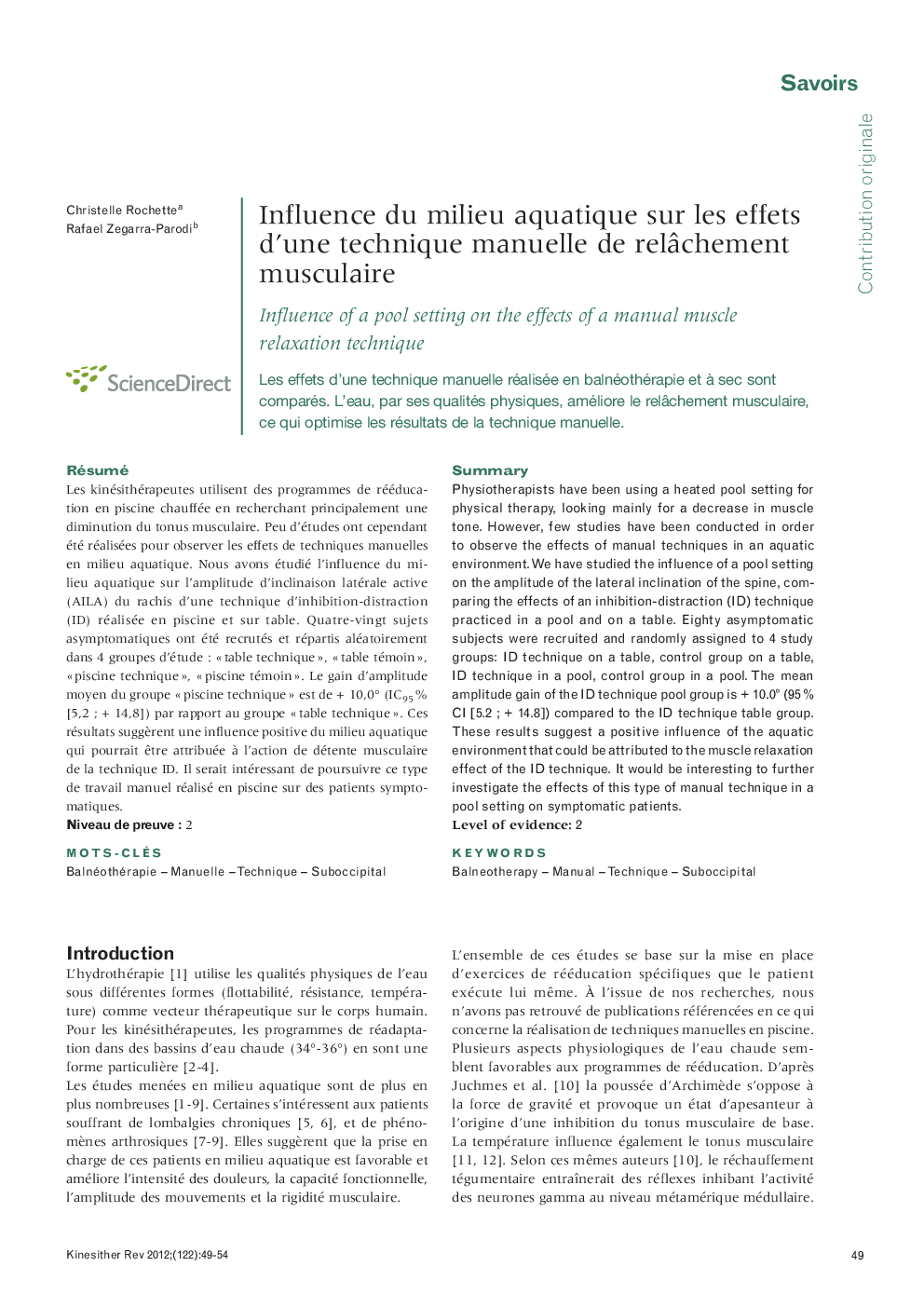| Article ID | Journal | Published Year | Pages | File Type |
|---|---|---|---|---|
| 2623262 | Kinésithérapie, la Revue | 2012 | 6 Pages |
RésuméLes kinésithérapeutes utilisent des programmes de rééducation en piscine chauffée en recherchant principalement une diminution du tonus musculaire. Peu d’études ont cependant été réalisées pour observer les effets de techniques manuelles en milieu aquatique. Nous avons étudié l’influence du milieu aquatique sur l’amplitude d’inclinaison latérale active (AILA) du rachis d’une technique d’inhibition-distraction (ID) réalisée en piscine et sur table. Quatre-vingt sujets asymptomatiques ont été recrutés et répartis aléatoirement dans 4 groupes d’étude : « table technique », « table témoin », « piscine technique », « piscine témoin ». Le gain d’amplitude moyen du groupe « piscine technique » est de + 10,0° (IC95 % {5,2 ; + 14,8]) par rapport au groupe « table technique ». Ces résultats suggèrent une influence positive du milieu aquatique qui pourrait être attribuée à l’action de détente musculaire de la technique ID. Il serait intéressant de poursuivre ce type de travail manuel réalisé en piscine sur des patients symptomatiques.Niveau de preuve :2
SummaryLes effets d’une technique manuelle réalisée en balnéothérapie et à sec sont comparés. L’eau, par ses qualités physiques, améliore le relâchement musculaire, ce qui optimise les résultats de la technique manuelle.Physiotherapists have been using a heated pool setting for physical therapy, looking mainly for a decrease in muscle tone. However, few studies have been conducted in order to observe the effects of manual techniques in an aquatic environment. We have studied the influence of a pool setting on the amplitude of the lateral inclination of the spine, comparing the effects of an inhibition-distraction (ID) technique practiced in a pool and on a table. Eighty asymptomatic subjects were recruited and randomly assigned to 4 study groups: ID technique on a table, control group on a table, ID technique in a pool, control group in a pool. The mean amplitude gain of the ID technique pool group is + 10.0° (95 % CI {5.2 ; + 14.8]) compared to the ID technique table group. These results suggest a positive influence of the aquatic environment that could be attributed to the muscle relaxation effect of the ID technique. It would be interesting to further investigate the effects of this type of manual technique in a pool setting on symptomatic patients.Level of evidence:2
